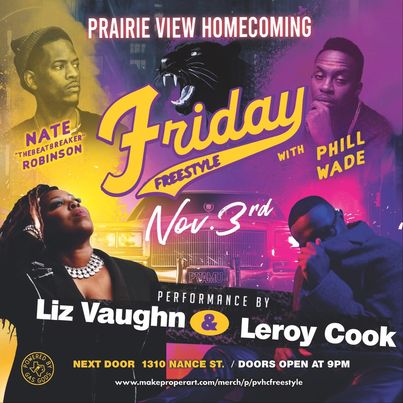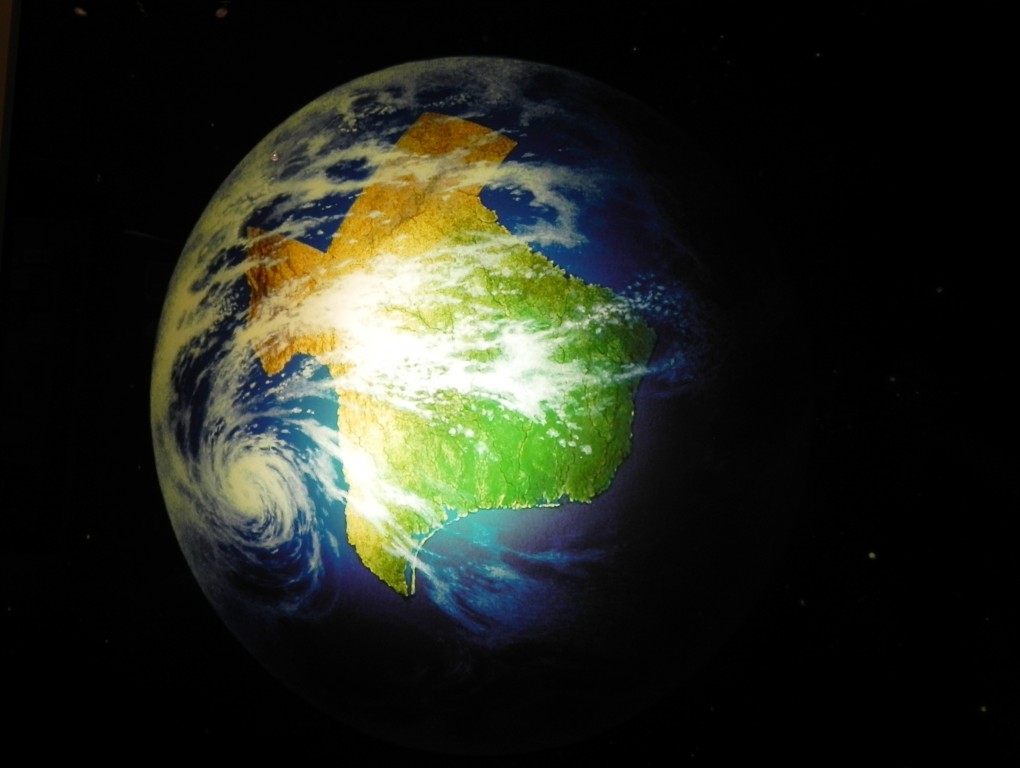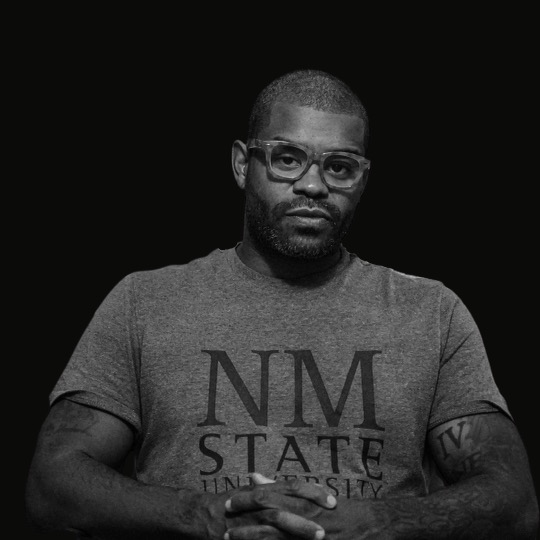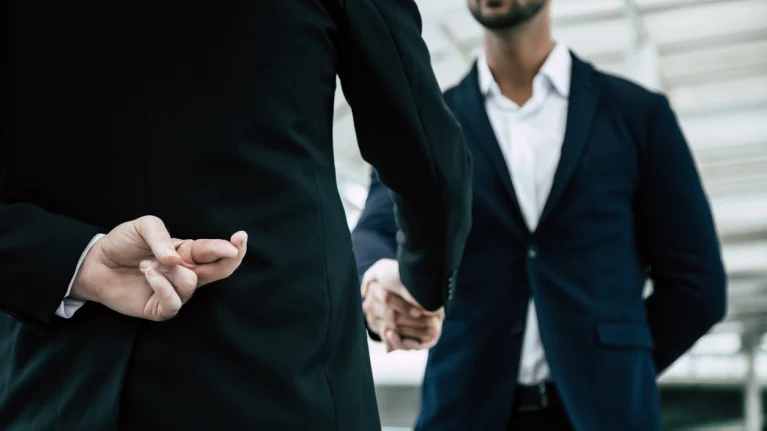“Houston is a cruel, crazy town on a filthy river in East Texas with no zoning laws and a culture of sex, money and violence. It’s a shabby, sprawling metropolis ruled by brazen women, crooked cops and super-rich pansexual cowboys who live by the code of the West — which can mean just about anything you need it to mean, in a pinch.” – Hunter S. Thompson
I left home as a young man under the tutelage of the Good Doctor, a graduate of the School of Self Taught, and a true believer of the “weirder the better.” Yet I was surprised to find the quote – seemingly a negative take on Houston, one that exudes a certain persona of the Dirty South – painted in earnest on the pool-room wall of Ladybirds in the Heights.
“Then the hard, dry Spaniards came exploring through, greedy and realistic…” John Steinbeck wrote in East of Eden, concerning the placenames of America. Through all of the influence, from Native culture, to the Spaniards, the French, Mexicans, and the Anglos; it all stayed. You cannot kill an idea, a piece will always remain.. “These tough, dried-up men moved restlessly up the coast and down…who kept the records and drew the maps…thus the first places were saints’ names or religious holidays.”
I visited Texas for the first time in 2014, on a college road trip/bender with a quick turnaround. 15+ hours along the long white line just for a disappointing Nebraska loss to Baylor in the first round of March Madness in San Antonio. Even in my youth and naivety, the culture shock seeped through, but became even more apparent when I eventually made my way through Central Texas some years later.
It’s a long drive from Omaha already, but we took the scenic route. I insisted. After all, the colloquial American Main Streets have so much to tell. I knew nothing about where I was headed, only that it was financially my only option. The two lane blacktop through the Piney Woods of East Texas and Texarkana drives like any road in rural Oklahoma or Nebraska. We followed the state lines of eastern Kansas and Oklahoma until we crossed the Red River, where the culture flips a switch. The water begins to muddy in the way that only a delta or a lowland bayou can. It’s all America, of course, although the altered dimension that is East Texas is immediately apparent, like a scene from a Transmetropolitan comic, becoming gradually more intense the closer you get to Allen’s Landing.

In Texas, they call them filibusters. Squatters, banditos, pirates, and bands of nomadic Natives comprised the Lone Star State by the turn of the modern age. A smugglers haven and a route to freedom in Mexico for escaped slaves made Texas a unique mixture of outlaws and freedom fighters who circumvented the laws of the United States for a century. They were early versions of what could have been – a Jefferson ideal without the racism – like a Henry Wallace or Bernie Sanders’ wet dream. Yet somewhere along the line government became more concerned with order than with freedom.
“Then the Americans came – more greedy because there were more of them,” Steinbeck wrote, “wherever a trickle of water came out of the ground a house sprang up and a family began to grow and multiply.” As we drove through the northwestern outskirts of the Big Thicket, you could feel the history, it was just hard to know what it meant at the time.
This unique combination of circumstances made way for the ground-level culture we see today. It really is chopped and screwed, with pieces of cultures chopped out and screwed together to get one of “God’s own prototypes,” Texas overall supports a large concentration of black landowners despite it’s Confederate roots. But the smugglers, squatters, and runaways were here long before Jim Crow. It’s not all rainbows and sunshine, but the outlaw culture carried many things into the American lexicon, including mariguan – or marijuana.
That’s it, that’s the thread that holds Screwston (or Houstoned?) together. It’s not oil or money, although they’re just as prevalent. It’s the “Code of the West,” the outlaws, the banditos that have circumvented governments around the world for centuries for the survival of a culture so deeply rooted in this city that on most days you can’t even see it underneath the consumerism that shows on every surface in our society. You see remnants of Middle America but to a mutated extent that makes it hard to recognize, it’s a snarling mix of industry and this Code of the West, like a characterization of Doc Holiday mixed with Rick Sanchez.
After six years of residence, I still feel like an outsider – welcome – but like a token Midwesterner among native Houstonians. Even though I now know what it means, the history you could feel, there’s still so much I can’t articulate. Sometimes I feel like a Woody Boyd copy, but then again he ended up fitting in just fine eventually.
Our editor here at Texas Trend, Devaughn Douglas, once described Houston as a “smushed New York,” that is, if you blatantly disregard the need for zoning laws, floodplain management, and generally stable logistics you get what Hunter S. Thompson called a “shabby, sprawling metropolis.”
Now, the Good Doctor’s full quote has always rang true for me. The river is indeed as filthy as the zoning laws and the ‘culture of sex, money and violence.’ The ‘brazen women’ are as hard to miss as the crooked cops, and the ‘super-rich pansexual cowboys,’ which is to say, not difficult at all. It’s all out in the open and a well-kept secret at the same time. The suburbs exude the ‘pretty boxes’ architecture indicative of snobby HOA’s and the sidewalks of Montrose are painted as the rainbow; but get caught on the wrong side of 610 at the wrong time with the wrong people and you can easily experience the dark side of the American metropolis’. This city has it’s own brand of grit that stands out from other major cities in the region or throughout the country. It’s the most air-conditioned, drunkest driving and deadliest roadway, Cajun eating, gun-toting, darn-tootenest city West of the Mississippi. The gun, police, road rage and gang violence are as visible as corruption cases, pollution, trafficking, and other crimes of the sinister variety. Yet, Southern Hospitality thrives here. Like some honky-tonk version of Sin City; debauchery to boot, but love to go around.

I arrived in time for the 2015 Memorial Day Floods. Only to turn around and return home during the worst flooding in Nebraska since 1993, and then returning once again to Houston for Harvey and Imelda. Dean Martin in 1965 characterized it as “lonesome in this old town, Everybody puts me down, I’m a face without a name, Just walking in the rain.”
The Amber City will certainly rain on your parade should you expect to find Bluebonnets, Poinsettias, rainbows and sunshine. It’s a tough city, a laborer’s city, and for that reason it boasts no extravagant tourist traps, no defining gorge or towering mountain peak; just asphalted floodplains and a shifty, tenacious culture. It’s amorphous, the culture, ever changing but always as potent.
The bottom line is that through all the rain, humidity, factory smoke and suffocating politics; there are more real people, good people here than there are people that make headlines on Click2Houston. It’s a chaotic mosaic of food and culture from around the world mixed with the homegrown culture of Houston’s deep roots.
And nothing exudes the Houston culture more than it’s small businesses, pop ups, artists, and creators. All of which will be featured, in perpetuity, here at Texas TREND Magazine.





